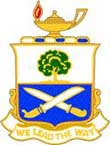Tristanjohn
Posts: 3027
Joined: 5/1/2002
From: Daly City CA USA
Status: offline

|
quote:
ORIGINAL: Mogami
Hi, In early 1945 the USN sent a wolf pack into sea of Japan (including the above mentioned Flying Fish) The pack contained 9 submarines. IJN ASW was at this point nearly non existent. 1 USN submarine was lost.
Well, that was Operation BARNEY under Commander E. T. Hydeman in Sea Dog. This wolf-pack (to include Crevalle, Spadefish, Tunny, Skate, Bonefish, Flying Fish, Bowfin and Tinosa) was known as "Hydeman's Hellcats" and, sailing from Guam 27 May 1945, entered the Sea of Japan through the Tsushima Strait on 5 and 6 June, where, in all, some 57,000 tons of Japanese shipping was sunk, including I-122 (bagged by Skate) and 27 merchants. The boat we lost was Bonefish. She ran into Toyama Wan near Honshu on 18 June. An enemy ship was sunk there the next day, and it is presumed Bonefish got her, but she was never heard from again. Bonefish was the last United States submarine lost in the war.
Hydeman got his command out on the evening of 23 June, returning by way of the Sakhalin Islands to Pearl Harbor, arriving there Indpendence Day.
In fact, Admiral Lockwood sent a second wolf-pack into the Sea of Japan, this one consisting of six boats (Jallao, Stickleback, Torsk, Pargo, Piper and Pogy), where it operated until VJ Day. By the middle of that last summer pickings were slim for USN submarines. The last significant merchant sunk by one of our boats was the cargo-passenger steamer Teihoku Maru of 5,800 tons, sent to the bottom by Jallao in the Sea of Japan 11 August. Within hours of the end, Spikefish sank I-373, this occuring 14 August just south of Shanghai. [Note: Morison makes the point that by the spring of 1945 Army aircraft and mines did more damage to enemy shipping than USN submarines. I haven't seen the data for his remark, but I have no reason to doubt it.]
By the way, at this juncture of the war we'd developed FM sonar for subs to detect mines in the water, and I believe all of Hydeman's boats were so equipped.
Anyway, the Japanese were still running convoys, though until this initial invasion of the waters between their home islands and China I'd guess they were relatively lax in that regard in the Sea of Japan. Of course as far as that goes, by this time there was hardly anything left worth mentioning to make a convoy up of to begin with! (Sorry for my dangling participles, but sometimes it just reads best that way.  ) )
As for IJN ASW work at the end of the war, it was never "good" for them compared to what the Americans and British developed in terms of technology and doctrine, but it did improve somewhat. For instance, Trigger, operating off Okinawa on 20 March, reported she had been forced under and held down there for two days by heavy depth charging after having sunk a freighter out of a convoy. The last contact with her was on 26 March when she sent in a weather report, but then she failed to acknowledge an order to join a wolf-pack that same day. Several USN submarines reported on the 28th of hearing a number of depth-charge attacks, and post-war interrogations revealed that the Japanese had made a combined air and surface attack that same day on one of our boats operating in those waters where Trigger was supposed to be.
|
 Printable Version
Printable Version







 )
)  )
) 




 New Messages
New Messages No New Messages
No New Messages Hot Topic w/ New Messages
Hot Topic w/ New Messages Hot Topic w/o New Messages
Hot Topic w/o New Messages Locked w/ New Messages
Locked w/ New Messages Locked w/o New Messages
Locked w/o New Messages Post New Thread
Post New Thread